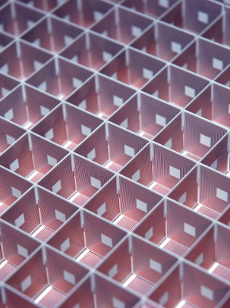Wireless power-up could put plugs in the past
 A new development could one day spell the end of wall-plugs and chargers, after a team was able to beam power from one device to another almost a metre away.
A new development could one day spell the end of wall-plugs and chargers, after a team was able to beam power from one device to another almost a metre away.
Wireless charging has already been implemented into a number of new devices, including recent mobile phones and laptops, but researchers at the Duke University’s Pratt School of Engineering in the US wants to end the hassle of plugging things in forever.
Until recently none had managed to beam power over distance much larger than the size of the transmitter and receiver. This means that wireless-power devices must be in direct contact with the unit sending the charge. The recent advance has extended this range by using a specially-crafted “superlens” to focus the beam.
The Duke team used metamaterials to create the superlens, which works to focus magnetic fields. The superlens translated the magnetic field emanating from one power coil onto its twin nearby, inducing an electric current in the receiving coil.
The experiment marked the first time power was transferred wirelessly with efficiency many times greater than could be achieved without the superlens.
“For the first time we have demonstrated that the efficiency of magneto-inductive wireless power transfer can be enhanced over distances many times larger than the size of the receiver and transmitter,” said Yaroslav Urzhumov, assistant research professor of electrical and computer engineering at Duke University.
“This is important because if this technology is to become a part of everyday life, it must conform to the dimensions of today’s pocket-sized mobile electronics.”
The metamaterials used were essentially copper plates arranged in a cube configuration, the interior walls intricately etched with a spiralling wire.
The geometry of the coils and their repetitive arrangement form a material that interacts with magnetic fields in such a way that the fields are transmitted and confined to a narrow cone, wherein the power is greatly concentrated.
Researchers say this approach can be implemented on smaller scales, as opposed to others which could really only be scaled up.
“It’s actually easy to increase the power transfer distance by simply increasing the size of the coils,” explained Urzhumov.
“That quickly becomes impractical, because of space limitations in any realistic scenario. We want to be able to use small-size sources and/or receivers, and that’s what the superlens enables us to do.”
“The true functionality that consumers want and expect from a useful wireless power system is the ability to charge a device wherever it is – not simply to charge it without a cable,” said Urzhumov.
“Previous commercial products... have not become a standard solution exactly for that reason; they lock the user to a certain area or region where transmission works, which, in effect, puts invisible strings on the device and hence on the user. It is those strings - not just the wires - that we want to get rid of.”
More details are available in the full report, accessible here.








 Print
Print